What is a zoned heating HVAC system? We get the lowdown from the pros
This expensive addition could actually save you money


One of the biggest downsides to traditional heating systems such as forced air heating or boilers and radiators, is that they heat every room of a house at the same time, resulting in higher bills.
This can be infuriating for you and your wallet if you only need to heat some rooms some of the time. That is where a zoned heating HVAC system might be able to save the day – and your savings.
Here, HVAC experts have broken down this flexible home heating type, exploring the pros and cons to help you decide if it's right for you.
What is a zoned heating HVAC system?
A zoned heating HVAC (heating, ventilation and air conditioning) system allows you to divide your home into sections, or 'zones'. Each zone is then controlled by its own thermostat to give you complete control over your heating to make your heating more efficient and prevent your house from heating unevenly.
Besides keeping a home warm all day, these HVAC systems can also cool down a room, making it ideal for those family members who prefer different room temperatures to others. Or, you can keep the lower part of your home at one temperature and the upper part warmer for example, offering you the flexibility to manage your home as you see fit.
Max Veggeberg, HVAC specialist, CEO, and founder of Tetra adds, 'Another common type of zoned system are mini splits, which are individual air-handling units connected to an outdoor unit providing targeted heating and cooling to a specific area. Other less common types include Hydronic Radiant Floor Heating and Radiator systems with Thermostatic Radiator Valves.'
The pros

There are quite a few pros to having a zoned heating HVAC system put in your home.
Geno Caccia, CEO of Caccia Plumbing says zoned systems are a great investment for homeowners wanting to improve energy efficiency and comfort. 'A zoned system works by using dampers to direct airflow only where it’s needed. Each thermostat adjusts temperatures for its zone independently, letting you heat or cool areas as needed. For example, you can keep the living room warm during the day while letting bedrooms stay cooler to save energy.'
Due to being able to control the entire system independently, the other bonus is it becomes cost-effective. Geno explains, 'While the upfront cost of installation is higher, the savings on energy bills and the ability to customize temperatures make them worth it in the long run.'
For example, if your home has large windows that allow lots of sunlight in during the day, then you can lower the heating on that side of the house and use the zoned system to warm up north-facing rooms while cutting energy bills.
For added flexibility, look out for thermostats that can be operated by your tablet or phone, most smart models work with HVAC systems. Once you've chosen your model (we love the make below) your next consideration is where should a thermostat be placed for the most accurate readings.
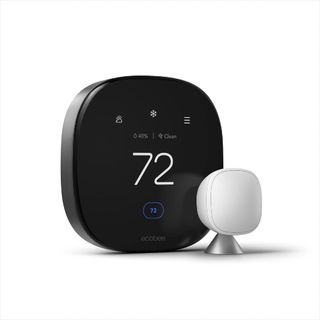
Highly rated, this ecobee thermostat works with Siri, Alexa and Google Assistant. Not only does it adjust the room temperature, it has a built-in air quality monitor, built-in smoke alarm detection and alerts to possible break-ins when your system is alarmed. The smart speaker means you can also control it with your voice. It's compatible with most 24VAV HVAC systems and is ENERGY STAR certified.
The cons
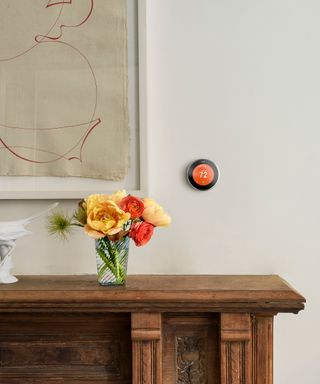
There are several instances where having an HVAC system installed wouldn't be a good idea. For instance, if you live in a climate that has a consistently mild temperature for the majority of the year, or if your home is small, then the upfront cost might not be worth the investment. Installed new, these types of systems are most efficient in larger homes unless you notice signs your old HVAC system needs replacing, and you fancy an upgrade.
Geno explains, 'Really, the main barrier to not having one installed is due to the upfront costs, it might not make sense for smaller homes and would likely require retrofitting older homes with existing ductwork. It's also important to note that if the system isn't installed or designed properly, it could lead to inefficiency and hot and cold spots in your home. I think if done right, they are worth it but, of course, there are risks.'
If a zoned heating system is not right for you but you still want to save money at home, don't fret. there are plenty of other ways to keep your home warm without turning up the heat.
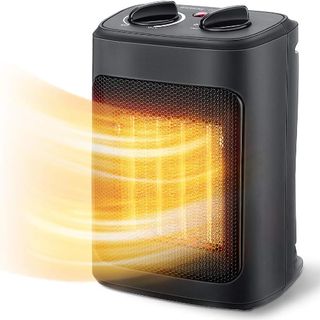
Portable heaters are a great way to add a burst of heat to a space that needs quick warmth. With 4.4/5 stars this electric model is great value and distributes heat evenly. There are three heat settings plus a fan-only mode so it can be tailored to suit your needs. It has an adjustable thermostat too which is a definite bonus.
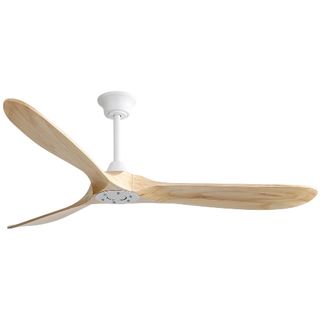
This beautiful ceiling fan has a dual use – not only will it keep your room cool in the summer, but if you tap reverse on the remote control it can help to recirculate warm air. With six speeds and a quiet operation, you can keep it on whilst you sleep too.
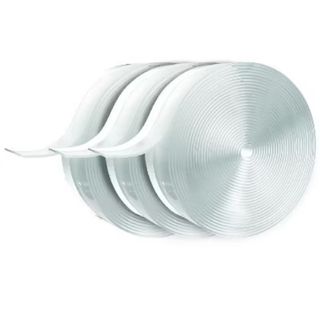
Most homes have drafts, but this insulation tape will help keep them at bay. The self-adhesive application creates an airtight seal to block drafts, moisture, and dust. You can use it on windows, doors, and shower gaps to keep you warm in winter and cool in summer.
The cost of a zoned heating HVAC system

As with most installation costs, the cost of a zoned heating HVAC system will vary depending on how big your home is and the work required to fit it.
Max Veggeberg says, 'A homeowner could be looking at $2,000-$20,000+ to install a zoned system depending on the system type and zone amount. Some zoned systems like heat pumps come with thousands of dollars in rebates and tax incentives which can make them much more affordable than other solutions.'
Geno Caccia adds, 'It does depend on the size of the home and whether it’s a retrofit or a new installation. Larger homes or more complex systems can cost more.'
Although it can seem to be a big outlay initially, having a HVAC system fitted can improve your comfort throughout your home and reduce energy costs.
FAQS
What is the difference between zoned and central HVAC systems?
Chuck Woosley, general manager of The Bee Heat & AC explains, 'The main difference between zoned and central HVAC systems lies in how they distribute heating and cooling throughout your home. A central HVAC system typically conditions the entire home as a single unit, meaning one thermostat controls the temperature for the entire space.
'In contrast, a zoned HVAC system divides your home into separate zones, each with its own thermostat and controls. This allows you to customize the temperature in different areas of your home, improving comfort and potentially saving on energy costs.'
How do I know if I have a zoned heating system?
If your home has more than one thermostat then you have a zoned heating system.
Chuck Woosely adds, 'Additionally, a zoned system often features dampers within the ductwork that open and close to direct airflow to specific zones. If you’re unsure, a local HVAC professional can inspect your system and confirm its configuration.'
Meet our experts

Geno Caccia is the CEO of Caccia Plumbing Inc., dedicated to delivering trusted plumbing services and advancing trade education.

Max Veggeberg is the CEO of Tetra, a rapidly growing home services company helping thousands of homeowners transition from fossil fuels to clean energy.

Chuck Woosley is the general manager of The Bee, a Zephyr portfolio brand servicing HVAC customers in the Denver metro area. He brings over 30 years of experience in the industry to his current role as general manager.
Once you have a HVAC system installed, it is important to know how often you should have a HVAC system serviced to protect your investment and keep it working year-round. Understanding how to clean your HVAC system will also help prolong its lifespan while ensuring maximum efficiency.
Sign up to the Homes & Gardens newsletter
Design expertise in your inbox – from inspiring decorating ideas and beautiful celebrity homes to practical gardening advice and shopping round-ups.

Sophie has been an interior stylist and journalist for over 20 years and has worked for many of the main interior magazines during that time, both in-house and as a freelancer. On the side, as well as being the News Editor for indie magazine, 91, she trained to be a florist in 2019 and launched Flowers Inside My Head where she curates beautiful flowers for modern weddings and events. For Homes & Gardens, she writes features about interior design – and is known for having an eye for a beautiful room.
You must confirm your public display name before commenting
Please logout and then login again, you will then be prompted to enter your display name.
-
 Where do interior designers find creative inspiration? We asked 9 designers to share, and their answers reflect how today's trends are formed
Where do interior designers find creative inspiration? We asked 9 designers to share, and their answers reflect how today's trends are formedAsking the interior designers who set the trends where they get their inspiration helps understand why decor today looks how it does
By Pip Rich Published
-
 7 fruits to plant in April for years of tasty homegrown harvests, plus expert planting tips
7 fruits to plant in April for years of tasty homegrown harvests, plus expert planting tipsAn exceptional selection of fruit trees and soft fruit can be planted this month
By Drew Swainston Published
-
 Why does my house feel damp? Experts reveal the 7 common reasons, risks and fixes to apply right now
Why does my house feel damp? Experts reveal the 7 common reasons, risks and fixes to apply right nowIf your house smells musty, there might be underlying damp to sort out
By Sophie Warren-Smith Published
-
 Do you have condensation on the outside of your windows? This simple rule of thumb determines if it's normal, or a sinister warning sign
Do you have condensation on the outside of your windows? This simple rule of thumb determines if it's normal, or a sinister warning signHVAC pros share expert insight
By Ciéra Cree Published
-
 HVAC pros reveal 2 'Goldilocks' ranges for the ideal room temperature in bitter winter – it differs from day to night, and room to room
HVAC pros reveal 2 'Goldilocks' ranges for the ideal room temperature in bitter winter – it differs from day to night, and room to roomKeeping rooms at the right temperature is vital for comfort and efficiency
By Ciéra Cree Published
-
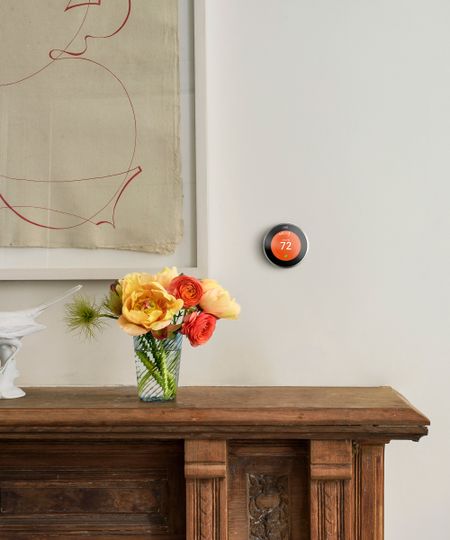 HVAC pros say this is the most efficient heating schedule to keep you warm at home all day – and why automating it is the best move
HVAC pros say this is the most efficient heating schedule to keep you warm at home all day – and why automating it is the best moveThere’s no one-size-fits-all – here’s how to tailor heating to your home
By Chiana Dickson Published
-
 How dust and dirt increases your energy bills – plus 5 ways HVAC pros deal with it to cut costs
How dust and dirt increases your energy bills – plus 5 ways HVAC pros deal with it to cut costsThese cleaning tips could save you hundreds
By Chiana Dickson Published
-
 Is your house heating unevenly? HVAC pros reveal 5 common reasons, plus their top tricks for consistent heating throughout your home
Is your house heating unevenly? HVAC pros reveal 5 common reasons, plus their top tricks for consistent heating throughout your homeEliminate hot and cold spots with these fixes
By Chiana Dickson Published
-
 I spent years trying to combat window condensation – then a simple dish-soap trick turned out to be the key all along
I spent years trying to combat window condensation – then a simple dish-soap trick turned out to be the key all alongThe dish soap condensation hack takes five minutes to do, is oh-so effective, and cleaning pros love it
By Eve Smallman Published
-
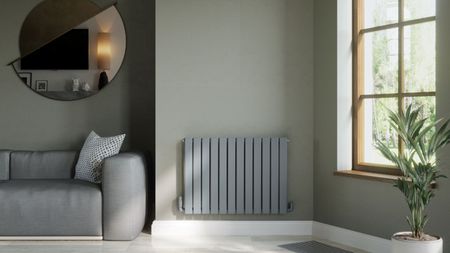 What temperature should a house be during a big freeze? HVAC pros reveal why this 'Goldilocks' temperature is so important for your health and home
What temperature should a house be during a big freeze? HVAC pros reveal why this 'Goldilocks' temperature is so important for your health and homeIt goes beyond your own comfort – it protects your property, too
By Chiana Dickson Published